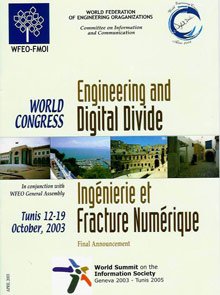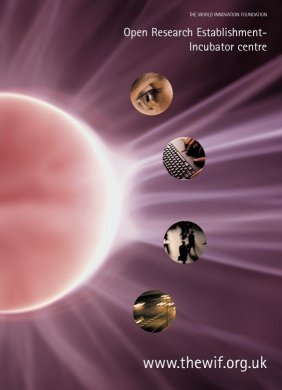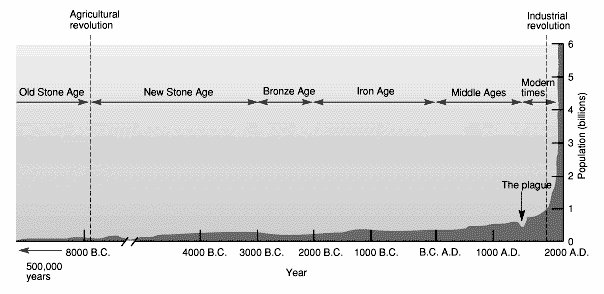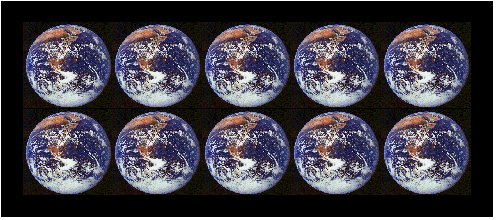|
WIF Senior Figures:
Our present senior figures are now shown on the screen.
 | President of the WIF
Nobel Laureate Professor Dr.mult. Jerome Karle, Hon.MWIF
Chief Scientist of the US Navy, Laboratory of the Structure of Matter, Washington, DC |
|
 | Senior Vice-President of the WIF
Nobel Laureate Professor Dr.mult. William Knowles, Hon.MWIF
Former senior scientist at Monsanto Inc. |
 | Vice-President of the WIF
Nobel Laureate Professor Dr.mult. Robert Huber, Hon.MWIF
Former Director of the Max-Planck-Institut fόr Biochenie |
|
 | Vice-President of the WIF
Professor Dr.mult. Kees Bulthuis, Hon.MWIF
Former Main Board Research & Development Director
Philip Electronics |
 | Chairman of the WIF
Presently un-elected |
|
 | Vice-Chairman of the WIF
Professor Dr. Mostafa K. Tolba, Hon.MWIF
Former Under-Secretary General of the United Nations and Head of UNEP |
Since 2004 also The WIF has been appointing national representatives and who presently are shown on the screen. |
 | Taiwan
Nobel Laureate Professor Dr.mult. Yuan T. Lee, Hon.MWIF
President of Academia Sinica |
|
 | Africa
Sir Andy Chande, Hon.MWIF
Spokesperson & Trustee for Rotary International
Government Advisor mult. & former Corporate Chairman mult. |
 | India
Professor Dr.mult. Narinder Gupta, Hon.MWIF
Former President of the Indian Society of Theoretical and Applied Mechanics
Former President of the Indian Society of Mechanical Engineers
Recipient of "Padma Shri" from the President of India |
|
 | The United States of America
Professor Dr. Julian I. Palmore, Professor of mathematics, Program in Arms Control, Disarmament and International Security |
The WIF will eventually have national representatives in all countries of the world.
As I have respectfully remarked, the WIF charity was created two years ago and its board is now shown on the screen. The charity was formed for the sole purpose of putting the vast collective knowledge base of the WIF to applied projects in the 'field'. For the WIF could go on indefinitely undertaking consultations but not until physical projects to change matters for the better would real change come. In this respect Politicians unfortunately were always more interested in governing and continuing to do so than change the world for the better through a great sea-change in their decision making process.
The WIF Charity, which is based in Bern, Switzerland, also has a board of Directors.
WIF Charity Board:
The present and board members and members elect are as follows:
Nobel Laureate Jerome Karle Chairman - USA
Dr. Rolf Jeker Vice-chairman elect - Switzerland
Mr. Omar Sultanov Member elect Kyrgyzstan
Sir Andy Chande Member - Tanzania
Professor Mostafa Tolba Member - Egypt
Dr. Kees Bulthuis Member - The Netherlands
Mr. Andy Sundberg Member elect - Switzerland and USA
Dr. Lutz Baehr Member - Germany & USA
Mr. Christoph Leuch Member - Switzerland
Dr. David Hill Member United Kingdom
The WIF is also presently looking too appoint three of its Nobel Laureate members to strengthen the Board also.
Now I would like to say a few words about the WIF and what it does
Basically The WIF undertakes independent consultations privately advising governments around the world on their indigenous and endogenous capacity building through the exploitation and application of science and technology. It also offers solutions for national, regional and global problems.
In addition, the WIF supports scientists and engineers at selective conferences expressing their unique position within society so that politicians grasp the vital role that they play in the creation of all new wealth and problem solving.
These consultations are normally at Ministerial level and on average involve around thirty to fifty Fellows and Honorary Members of the WIF per consultation. As one can understand, this work is highly sensitive and by its very nature, highly confidential.
Unfortunately it has to be said that the vast majority of our politicians and leaders especially in 'western economies' as compared to their counterparts in the 'East', do not really understand the vital importance of science and technology, and where in this century in particular, this will be a great weakness for all nations who do not.
Therefore some of the things we have done in recent years to raise the profile of scientists and engineers in the minds of politicians, is have WIF keynote speakers, usually Nobel Laureates, addressing national and international conferences.



In recent years some of these conferences have included the 'World Engineering Congress on the Digital Divide' for the WFEO who represent over 15 million engineers worldwide, the Brazilian national science conference where they had never had a Nobel Laureate address any of their major scientific conference in Brazil before and the international charity KidsRights that looks after the interests of children throughout the world. Last year the WIF was the co-sponsors of UNESCO's 5th Global Congress on Engineering Education.
But, as we are overridingly an 'applied' institution we do not normally get involved with conferences as our energies we feel are better placed elsewhere.
Added to these involvements, the WIF Charity engages with Governments and other Foundations in respect of physical projects in the 'field' that are part of the Mission of the charity.
Presently these include and where I can only list them due to time constraints:
- Development of a National inter-linked advanced technology incubator System in Kazakhstan
- Introduction of advanced technology in Kazakhstan
- Development of an advanced technology incubator in Kyrgyzstan
- Global introduction of a traditional medicine treatment for hard drug addiction that cures and does not use substitute drug dependency in perpetuity
- Global containment and strategy for a possible Bird Flu pandemic
Added to the above we are currently exploring
- Possible collaboration with the US Congress relative to energy issues as an external independent advisor
- Possible collaboration with other international Foundations with such as the Gates Foundation
- Possible collaboration with Edward de Bono and others of like minds.
But what you might ask is, what is the Mission of the WIF?



Elevation of an ORE Incubator Centre



Artists Impressions of the ORE-STEM Complex
The Mission of the WIF is vast. With the constant and continually destabilisation of the world order through conflict, famine, disease and natural disasters, the WIF considers that the establishment of a global network of physically interlinked centres in every country in the world to harness the world's solving powers is vital for humankind's survival.
This vision consists of putting into place the creative infrastructure that the world needs if we are to prevent our very extinction being increasingly under threat during this century and also to provide the 'technological tools and miracle technologies' that we shall all need to solve the world's impending global problems. These problems are immense to say the very least.
Therefore our mission, God willing, is to:
- Design, build and operate The Open Research Establishment by 2050 for the future benefit of all Humankind - The ORE-STEM Complex
- Design, Build and Operate over 1,000 ORE-Incubator Centres throughout the World by 2050 for the Benefit of all Peaceful Nations
- Act as 'independent' advisors to ALL Non-Aggressive Nations of the World, and
- to Act as principal advisers to Environmentally Conscientious Corporate Entities
But again you will also ask, why do we say that this global creative infrastructure has to be put into place?

| Everyone at the current U.S. standard of living and with all the health, nutrition, personal dignity and freedom that most Americans currently enjoy. | 2 Billion |
Everyone at the same affluence as the U.S. (current), but with many and onerous restrictions on freedoms relative to behaviours leading to environmental degradation. To accommodate populations greater than 2 billion, restrictions such as the following would have to be instituted:
- Massive recycling
- Driving restrictions (gasoline rationing, fuel rationing even to mass transit systems)
- Restrictions on the transport of food (food transported no more than 100 miles for example to its point of retail sales)
- Prohibitions against cutting trees on one's property
- Limitations on the burning of fossil fuels to save these complex molecules for more valuable or durable uses, such as in the manufacture of plastics and pharmaceuticals
Limitations on the areas of open spaces that can be converted to renewable energy power plants, such as solar thermal, solar photovoltaic, and wind energy systems. This latter results from the need to preserve natural areas for food growing. |
4 Billion |
| Only people in the U.S. and Europe at current level of affluence. Everyone else at the current prosperity level of Mexico. | 6 Billion |
| Everyone in the world at Mexico's current prosperity level. | 20 Billion |
| Everyone in the world at the current "prosperity" level of northwest Africa | 40 Billion |
One can see that humankind's numbers have increased significantly since the dawn of the scientific age. But this has brought with it an enormous demand on the Earth's natural resources. So-much-so that we have reached the point where we will not be able to satisfy human demand with the resources that the Earth can give. Indeed, in a mere few decades from now the world will be a totally different world that we see today. In this respect, with vast increasing numbers and ever dwindling natural resources, by mid century our world will most be likely ravaged by continuous wars and a fight for individual survival itself, but where no nation will be immune to the destructive forces of survival.

The Brundtland Report of 1987 which was commissioned by the UN, calculated that it would take more than ten planet Earths to provide the required resources for everyone with the same resource use and wealth as the USA.
Currently, humanity's Ecological Footprint (EF) is more than the Earth's capacity. We are using around a third more than nature can regenerate. The challenge of sustainability is to find ways to create fulfilling lives whilst reducing our impact on planet Earth.
Adding to this situation, Klaus Tφpfer, the former executive director of the UN's Environment Programme has stated in recent times that, and I quote, "We are overusing our natural capital and the solutions must be linked to our cities". For in this respect he went on to say, "Energy use has increased 16 times, water use has increased nine times, fish catches have increased 40 times and all in the space of one lifetime around 75 years.
Looking into the future we can make a few predictions without much risk of being wrong. Longer-term developments of the human experience on a global scale will have to face increased population growth, an escalating demand for ever scarcer resources, further ad hoc technological breakthroughs, the diffusion of communication possibilities, major impacts of climate change and a growth of vulnerability-increasing shocks related to our man-made environmental mismanagement of the planet.
It is much less clear what the governance answers will be on a world scale, and how new governance arrangements will succeed to manage life-threatening risks for dependent people, or even for humankind as a whole.
The economic and political tensions of this century will be dominated by one question; will the world develop a new governance regime for the globalised economy that will preserve life on Earth? Or, will the world create regionalised block formation, in which 'developing countries' will become integrated into different economic blocks that divide and conquer in the long run and ultimately decimate civilization?
When it comes to global peace, what will be the position of obvious tension zones such as the Middle East be and how can we solve these age-old problems? For if peace has to stand a chance of success, we simply have to find lasting solutions throughout the world.
It is still unclear how competition for depleting resources and vying for economic domination in the future may possibly translate into international violence or even the possible extinction of human life through nuclear warfare and terrorist acts of mass destruction on a grand scale if left unchecked by common sense and logic.
It can be predicted that innovation capability will continually move to high-tech low-payment economies and where probably a large part of the world's people will still be left out.
This will cause international migration problems on a massive scale that will greatly add to instability and uncertainty throughout the world. If this is the final outcome as it presently looks like on paper, it should if common sense prevails, add a further dimension for the vital need for the introduction of global governance to be put into place. If not, we shall see in this century a global migration problem that will be on an unprecedented level in the history of the world. All this would be due of course to a concentration of resources and the economic survival of the fittest.
Therefore areas of economic opportunities and areas of economic threats will co-exist side-by-side acting rapidly to the demands of globalisation. The outcome of this will continually undermine the profitability of long-term investments that will favour short-term gains with irresponsible business practices for survival. Therefore again, a new form of governance on a global scale is dramatically needed, in order to prevent unethical capitalism emerging with cutthroat competition for scarce resources. This also required to manage the global rewards for labour equally amongst the people and for innovative capability. Indeed, a future sustainable corporate world order demands global governance structures being put into place and the marshalling of a new equivalent present-day 'Marshall Plan' for more equal opportunities for all. That is if we are to achieve peace in this century and beyond if we get there.
Presently I am not confident that the world will obtain the global political and corporate leadership needed for this task, but where with the right advice they just may. Therefore the solution lies in the right advice for there resides either the answers to our future problems or to our total demise.
Overall there are many global problems on the horizon for humankind. The main of these can be summarised as,
1: Global warming and Climate Change
Probably the most important lesson we can learn from astronaut observations is that air, oceans, lands, and all life forms are parts of one family. Everything is connected to everything else. A rise in the temperature of the Pacific Ocean, for instance, can cause storms and floods on the other side of the planet. These observations have opened our eyes to the unity and diversity of life on this little, blue planet, slowly turning on its axis in the darkness of space.
The direct problems associated with climate change, and global warming especially, are now better understood, but where there are many knock-on effects also that many people are not aware of.
At the beginning of this month, CNA Corporation a nonprofits research consultant to the US federal government released a report that stated there was growing concern surrounding a new national security threat that had an ominous trend which could foster terrorism worldwide and draw armed forces into messy regional conflicts in Africa, Asia and Latin America. This was not nuclear proliferation, global terrorism or a new wave of religious fundamentalism but global warming. In this respect the report stated that "Climate change can act as a threat multiplier for instability in some of the most volatile regions of the world".
Droughts, crop failures and tropical-disease epidemics caused by global warming could destabilize already fragile governments in Asia, Latin America and especially Africa, creating the kinds of "failed states" that harbor Al-Qaida and other terrorist groups. Sea-level rise could scatter refugees by the tens of millions from low-lying countries like Bangladesh and Vietnam, putting stress on both of them and their neighbouring countries.
Indeed, even Margaret Beckett stated only last month at the UN Security Council debate on global warming that Drought, floods and rising sea levels linked to climate change would start wars around the world. The Foreign Secretary highlighted these tensions which were likely to emerge as countries compete for scarce food, water and energy resources in the future.
But it has to be said that what precipitates this condition is desertification and land degradation and where at the same debate Janos Bogardi, head of the UN University's Institute for Environment and Human Security cited the conflict in the Darfur region of Sudan as "probably the most prominent example" of a conflict partly caused by land degradation.
The interlinking between terrorism and global warming is also starting to show its ugly head. In this respect a further report only last week by the OR Group, an Oxford-based group of independent researchers., (cited that the combination of the disastrous effect of global warming with global militarization was increasing the likelihood of more terrorist attacks on the scale of September 11th. The reason was that both were deepening dangerous divisions, political Islam was growing worldwide and that the number of significant terror attacks was on the rise.
Overall the report summarised by stating that "There is a clear and present danger - an increasingly marginalized majority living in an environmentally constrained world, where military force is more likely to be used to control the consequences of these dangerous divisions, Add to this the disastrous effects of climate change, and we are looking at a highly unstable global system by the middle years of this century unless urgent action is taken now.
On the 14th of this month Christian Aid added weight to the growing problem in stating that more than a billion people, one in seven people on Earth today, could be forced from their homes between now and 2050 if climate change worsens. They agreed that climate change is likely to lead to expanding deserts and that will mean more forced migration. Indeed they went on to say that conflict, large-scale development projects and widespread environmental deterioration will combine to make life unsupportable for hundreds of millions of people, mostly in the Sahara belt, south Asia and the Middle East.
Even human mortality threats that we have not known before are now being attributed to global warming in future years. The NHS this month projected that heat-waves and a rise in food poisoning, flooding, ultra-violet light and ozone pollution triggered by global warming, could kill thousands of people a year across Britain in the coming decades.
2: A Doubling of Global Energy Requirements by 2030 and its' Effect' on Pollution & its Green House Gas Effect
The larger picture shows Western Europe and where air pollution is greatest. Measurements of pollution and smoke airborne particles are important because, depending upon the type of particles produced, human pollution can either have a warming or cooling influence on climate, and they can either increase or decrease regional rainfall.
The picture to the top right is a typical picture of Industrial pollution caused through the current Primary Energy sources of oil, gas and coal and as we know, the main contributor to Co2 gas emissions.
The final picture depicts parts of present day China and where the problem of air pollution has reached a critical level already. China's levels of total suspended particulates (TSP) and sulfur dioxide (SO2), two types of air pollution, are among the world's highest. Even in 1995, the World Health Organization monitored 88 of China's cities for SO2, and more than half of these were above the standard levels of acceptability. Coal is the primary source for SO2 emission, yet more than three quarters of China's commercial primary energy needs comes from coal. SO2 levels are highest in northern China, because coal is used to heat homes and buildings several months out of the year. Comparatively, while northern China uses far more coal, the coal that is mined and burned in southern China is high in sulfur and extremely polluting. While industrial air pollution is still the major source of China's overall air pollution, levels stemming form the transportation sector are becoming more alarming. China is fastest shifting economy towards increased vehicle use. The number of motor vehicles on China's roads has nearly quadrupled since 1984, and continues to grow exponentially like India as well. Yet the actual number of vehicles being driven does not have such an impact on air pollution as does the country's low emission standards, poor roads, and outdated technology. Emission standards in China are equivalent to the standards for developed countries during the 1970s. Furthermore, most cars in China are still fueled by leaded gasoline, and where lead exposure has been proven to be a significant health hazard.
But alarmingly and although China has ratified and signed the Kyoto Protocol, it will not have to start implementing its Kyoto obligations, if it does, until 2012 due to it being a developing nation in 5-years time and on its present path, China could quadruple its primary energy requirements without any pressure being placed upon it whatsoever under the Kyoto Agreement. Alarmingly again for all in the world including themselves, this goes for the world's largest democracy too!
Other major factors that are now only just emerging as a substantial bi-product and human threat due to global warming is that the permafrost in Northern Siberia that has trapped carbon for up to 1.8 million years is now melting and releasing itself into the atmosphere as methane. The problem with methane is that it is as a greenhouse gas, 60 times more potent than carbon dioxide. The findings published in the magazine 'nature' last September undertaken by researchers at Florida State University stated that they had gone back in time to find if temperatures had risen in the past. This research found that in this region of Northern Siberia where the temperature is permanently many degrees below freezing, that over a period of a few hundred years temperatures had indeed increased by up to 15C. The only answer for this fast acceleration of temperature was that vast amounts of Methane must have been released into the atmosphere.
On a further note on pollution and green house gases, the United Nations Environment Program (UNEP) stated in February of this year that where carbon dioxide surpassed 280 parts per million (ppm) during the 18th century and at the beginning of the Industrial Age, it now measures 380 ppm, an unprecedented concentration in the last 400,000 years.
Therefore there cannot be any illusions now that humankind has immense future energy and pollution problems residing on the near to medium horizons of time.
But where I also have to add here that electricity is the life-blood of all economies and nations. Considering this truism of the first order, the WIF sees that photovoltaic and solar technology are a prerequisite requirement to sustain life on planet Earth, for we have an abundant energy source in the Sun that will never go out.
But when it comes to industry a great number of people think that carbon trading will diminish our problem and help to save the planet when it comes to pollution. Carbon trading is theoretical a quick and easy free market solution to what economists call the 'negative externality' of greenhouse gases.
Under this pioneering system adopted by the European Union two years ago, governments around the world get to allocate permits to pollute up to a given quota for each country for their respective industries.
Companies that do not expel carbon into the atmosphere up to their allocated limit can sell on that right to other companies. The theory is that they will thereby happily introduce anti-pollution technology because they can profit from doing so.
I have never really been happy with this self-regulating way of going about things and can only see that a statutory approach making the adoption of 'best available eco-technology' mandatory for all companies as the defining solution.
In this respect only in February of this year I read in the Financial Times where the scheme has actually become a perverse enticement to increase pollution believe it or not. In this respect Chris Rogers the utility analyst at JPMorgan stated that 'The price for a permit to emit one tonne of carbon dioxide has plummeted to a record low of just 1.50 ($1.94) a tonne, a fraction of the peak 30 level hit last April. At current prices it is far cheaper for utilities to burn coal and buy the emissions permits that allow them to pollute, than it is for them to buy cleaner fuels such as natural gas. He estimates that a utility can buy coal that is 10 per megawatt hour cheaper than gas and There is no economic incentive for users to import less coal than they did last year".
The article is further evidence I believe that when it comes to saving the planet, the free market is more likely to be part of the problem than an element of the solution.
But energy satisfaction per se is an enormous problem. That is, if we are to satisfy demand with carbon based fuels such as oil and gas. Alternatives to oil are cited like Ethanol but where this cannot be the solution for even presently, 2.40 billion square miles of arable land would be required to supply the world with the equivalent in Ethanol of oil alone (our global consumption is approximately 31 billion barrels a year). The world's productive land mass which consists of arable land, pasture and forest covers only approximately some 33 million square miles. Therefore there is no chance at all that we can ever count on growing to solve our energy problems as a substitute for oil. The reason, we would need nearly 73 times the amount of land that we presently possess. But remember also, that this is only oil substitute and Gas is not even a part of this assessments. For your further information the world's land mass covers an area of 197 million square miles (arable, pasture, forests, deserts and mountains).
Indeed, when it comes to Gas consumption worldwide the CIA Factbook states that we presently use 3 trillion cubic metres of natural gas annually. This is equivalent to approximately 2/3rds of the consumption in oil by the world. Therefore the problem of energy solving is far more acute than many people think.
The table on the screen now shows how primary energy resources have increased over the years.
| | Units | 1979 | 1980 | 1981 | 1982 | 1983 | 1984 |
| Total World Oil Consumption | Mtoe | 3,105.9 | 2,972.1 | 2,867.8 | 2,775.4 | 2,758.4 | 2,811.1 |
| Total World Gas consumption | Mtoe | 1,293 | 1,306.9 | 1,321.4 | 1,326.9 | 1,340.2 | 1,459 |
| Total World Nuclear energy consumption | Mtoe | 144.8 | 161 | 189.2 | 207.5 | 233 | 281.7 |
| Total World Hydroelectricity consumption | Mtoe | 380 | 387.4 | 395 | 410.8 | 430.6 | 444.8 |
| Total World Coal consumption | Mtoe | 1,831.2 | 1,801.2 | 1,816.1 | 1,848 | 1,894.6 | 1,987.9 |
| | Units | 2003 | 2004 | 2005 |
| Total World Oil consumption | Mtoe | 3,655.6 | 3,798.6 | 3,836.8 |
| Total World Gas consumption | Mtoe | 2,341.7 | 2,425.2 | 2,474.7 |
| Total World Nuclear energy consumption | Mtoe | 598.2 | 625.1 | 627.2 |
| Total World Hydroelectricity consumption | Mtoe | 607.6 | 643.2 | 668.7 |
| Total World Coal consumption | Mtoe | 2,629.2 | 2,798.9 | 2,929.8 |
(BP Statistics in million tons equivalent in OIL)
The significant fact looking at the chart is slowly but surely, gas is catching up with oil for being the primary energy source. Indeed, in 26 years coal consumption has grown by 60%.
3: International Terrorism
Terrorism is a part of the conflict family. Conflict is predominantly caused by a lack of natural and physical resources for a reasonable life most previous major wars have been fought on these grounds. But overall, the WIF believes that most conflicts can be stopped or be non-existent if equality and socio-economic parity can be reached. Indeed, the WIF has recently put forward a new agenda for conflict resolution in the Middle East through the means of capacity building the region by their own people and with the help and assistance of independent technical know-how.
The WIF is a firm believer that if you get the economics right, you get most things right, even when there are different religious beliefs. The problem is that governments still try to solve age-old problems with the same old mechanisms that have failed in the past and therefore we never solve the problem and what really should be at the heart of any solution. In this respect though I was pleased to see only this week that Israel is to sign a multi-billion dollar contract for the supply of Palestinian Gas and where Palestine will receive £1 billion in royalties. This is a pointer to what the WIF says is the right way forward and where and how stability and peace will ultimately come from. For only through mutual trade will this happen and where the history of the world is full of examples where trade has brought once warring tribes together. The reason, it was in their economic interests to do so.
4: Human population growth to +9 to possibly +12 billion people by 2050, Future Migration and Human Consumption
Consumption is as an important factor as population growth, for the dark side of consumption is the depletion of ecological goods (water, air, forests etc) and services (nutrient cycling, carbon sequestering, etc). Therefore we must focus our attentions on two area, the reduction in consumption and population growth. The first is clearly the responsibility of the wealthiest nations, as according to the UN's WIDER (world institute for development economics research of the UN University) the 12% of the world's population considered to be the rich, account for 60% of all private consumption spending.
Since the year 2000, in excess of 547 million more people have been added to the world's population after taking into account the death rate toll. By 2010 or before we shall have 7 billion humans. On current trends therefore, there will be around 10 billion humans living on planet Earth by 2050. But, as the world finds that it cannot cope with such numbers and a lower age death becomes more common place throughout the world, people will continue to increase birth numbers, just as nature always ends up doing so to preserve life. This may seem to be a contradiction, but increased numbers combined with ever dwindling resources will cause the inner survival gene to kick in to preserve the human existence. The law that if there are many, a few will survive.
But, if the population doubles like in the past 40 years, by 2050 there will be 13.4 billion people living on planet Earth. In this respect there is now growing concern, even reported by the BBC News only this very month as well, that this figure may possibly be more realistic, as China for one, is not stifling population growth and where the ever-increasing affluent families are now flouting the law and having more than one child. The reason is simple, they now have the money to pay the fines imposed. Added to this in rural areas, people are marrying younger and where they are still requiring male offspring no matter how many new babies are born. The birth constraints imposed by China are therefore not working.
As of now, the population is growing at such a rate that by our mid-term future, the planet will not be able to support the increased numbers as standards of living around the world increase by the year. Indeed, because of our well-endowed life-style in the rich countries especially, humankind has effectively become almost immune to natural selection. With our healthcare and medicines, diseases are no longer as much of a problem but only currently I would say. There are different solutions to population growth. Some have even suggested that we could start populations on another planet, performing a two-fold use of keeping the human population limited while also acting as a kind of safeguard for the human specie to survive, should some great calamity befall our planet.
Adding to what has been said and according to the most recent information from the CIA fact book, the world's birth and mortality figures for 2007 are estimated at 20.09 births per 1,000 population and 8.37 deaths per 1,000 population.
Therefore there are presently nearly 12 additional human inhabitants for every 1000 presently living on planet Earth every year. Or in other words, 804 million more people will live on Earth every ten years. This is another pointer to why population increase may very well be under estimated and constantly rising as even the UN's recently re-evaluated figures based on 9.2 billion by 2050 equates to only a 58 million increase a year a difference therefore of some 22.4 million people a year.
Overall, population growth linked with prosperity aspirations for all and referenced to what the world has to offer in terms of its natural resources, there is no possibility that the two can be reconciled with present political thinking around the world.
5: A Sustainable Food Supply
Population is a function of food supply, not the other way around. Food supply is an ecological magnet that draws the general population numbers to it.
As an example it was recently cited by World Population Awareness in April 2007 that if the 1.3 million residents of Franklin County in the USA had to live on the resources the county could provide, only about 100,000 would live there. Interestingly Britain on its own only produces enough food for 17 million of its 60 million plus inhabitants. The problems arise of course when imports are severely hit, as most likely they will be in the years ahead. But as we also know, when a government cannot feeds its people, anarchy raises its ugly head.
The facts are that growing 1 ton of grain requires 1,000 tons of water. There are water shortages already and, as water is redirected from agriculture to support sprawling urban populations, more grain must be imported. Soybeans are increasingly in demand for bio-diesel and where ethanol now vies with food for corn. By 2008, half of the U.S. corn crop will go to ethanol. What happens to U.S. corn crops affects a lot of countries. This competition for energy and food will in future years change the landscape completely.
A nation's ability to feed itself very much depends on three factors: availability of land capable of being farmed productively (arable land), accessibility to water and population pressures. Simply put, the more people there are the fewer resources there are to meet basic needs. If basic needs cannot be met, development slows and economies begin to disintegrate. In some poor countries, attempts to enlarge food production and consumption are destabilized by rapid population growth; migration from rural to urban areas; unequal land distribution; shrinking landholdings; deepening rural poverty; and widespread land degradation. Lower birth rates, along with better management of land and water resources, are therefore necessary to avert chronic food shortages.
6: Clean Drinking Water and Drought
A recent study by Colorado University, one of many carried out into the state of the planet's fresh drinking water yearly, commented that the world's fresh water supply is dwindling every year. This is of no surprise as this has been happening for quite a few decades now as population pressures make water depletion a constant problem. But what this report went on to say was that within 25 years, half the world's population could have trouble finding enough fresh water for drinking and irrigation.
For their determinations the researchers surveyed river basins all over the planet to identify the ones under most pressure.
It found that a third of the world's people already live in regions considered to be "water-stressed" as there was not enough, or hardly enough water to go around.
The waterways that were under most pressure included China's Yellow River basin, the Zambezi River in Africa, and the rivers that lead into the Aral Sea in Central Asia and where most of the water from those sources was used for irrigation, not drinking.
The report concluded that with rising populations half the world's people will find it hard to get enough water for crops and livestock within 25 years, and still have enough left to drink themselves.
But it also concluded that as many of the world's freshwater rivers crossing more than one country, that political solutions, as well as scientific ones were needed. For without the political leverage no solution at all would be found.
Water will therefore become a major global problem and where the UN has stated that as many as 7,000 million people in 60 countries could face water scarcity by 2050. Climate change according to the UN will account for an estimated 20 percent of this increase in global water scarcity.
7: Global Pandemics
In April 2007 the World Health Organization said that emerging diseases, climate change and chemical, radioactive and biological terror threats are putting all nations at risk.
Globalisation has brought many benefits it said but also it had brought many risks. Health risks are among the most lethal. The World Health Organization stated that outbreaks of emerging and epidemic-prone diseases constitute one of the greatest direct threats to international health security.
WHO Director-General Margaret Chan considers that all nations are at risk. In a highly interconnected world she said where diseases spread fast and recognize no boundaries, cooperation between nations is crucial and where countries must share the responsibility for defending themselves against disease.
Dr Chan further went on to say that "In a sense, no one institution, organization or country can manage a public health emergency of international concern single handily and we are beginning to see that"
Indeed, the World Health Organization reported that disease is a much larger menace today than three decades ago and new diseases have emerged in unprecedented numbers. As such, diseases such as Ebola and HIV/AIDS, new forms of epidemic cholera and meningitis, and H5N1 avian influenza have killed hundreds of thousands of people.
Added to this Margaret Chan went on to say that, "The next pandemic will certainly happen and their will be economic consequences for the whole world.
In this respect as an example and although fewer than 10,000 people became ill from SARS a few years ago, the SARS epidemic cost Asian countries $US60 billion dollars in losses in the second quarter of 2003 alone.
The comparison between rich and other nations is also of concern according to Dr. Gro Harlem Brundtland, former director general of the World Health Organization who said this in February of this year.
For instance, Low and middle-income countries earn 18 percent of the world's income, but bear 93 percent of the disease burden, and yet only account for 11 percent of global health spending. Therefore international collaboration on issues of health and sustainable development should be paramount in everyone's thinking if major diseases are to be prevented in the years ahead.
Overall Dr. Brundtland commented that, "There is no alternative to building a moral and scientific basis for taking a more shared responsibility across nations," Indeed, "It is up to each and every one of us to do our part in making that happen in our own society and across the world.".
In the least developed countries, three-fourths of people die before the age of 50, and infant mortality is almost seven times higher in developing countries than it is in industrialized ones. Children born in developing countries have a 1,000-fold risk of dying of measles alone.
The World Bank has also predicted at a highly conservative level that Bird Flu alone has the potential to kill 70 million people and put a $2 trillion hole into the world economy. The WIF considers that these figures are extremely low and where if ever the avian flu became a virulent pandemic, hundreds of millions would perish and that the global economy would be hit by as much as up to US15 trillion in losses.
As Climate change is interlinked even with human health, the former director of the National Science Foundation and WIF Fellow Dr. Rita Colwell only this week stated that as climate changes, so do infectious diseases.
Presently the WIF is trying to raise funds so that Prof. Ken Shortridge, a WIF Fellow, can effectively deal with the enormous threat to humankind from Avian flu. For Prof. Shortridge knows more than anyone else in the world today that there are major chinks in the armour where this horrendous killer disease can escape. For your information Ken Shortridge was the person who first identified that a mutant strain of bird flu had jumped from animal into humans in Hong Kong in 1987 and thereby through his rapid work stopped a pandemic in its tracks, saving millions of lives in the process. Having been advisor to the WHO and NIH etc, he knows what is drastically lacking with the present measures to contain the disease. They are inadequate to stop such an event happening, as it will in time and possibly only tomorrow.
8: The desertification of our arable landmass
According to the the worldclock (Population growth v. depleting Productive land), every 7.67 seconds, a hectare of the world's productive land (arable , pasture and forest) is lost. The world's total productive land mass covers some 33 million square miles.
9: Natural Disasters and human derived disasters
Unfortunately these disasters will escalate in this century as Global Warming kicks in
and last but by no means least,
10: Environmental degradation (to our seas, oceans and land mass)
Unfortunately again, these human-made disasters will escalate in this century as greater risk to sustain life on Earth is accepted. The problem is that these will be far greater than what we have ever witnessed before, as they will literally affect millions of people in the long-term.
But these immense problems that we all face together, if change does not happen quickly enough will leave no one immune, both rich and poor alike. In this respect it will make no difference if you have a private jet or are only able to travel no further than your home country. For in the world that we proceed towards presently, our world if it does not change its ways, will unfortunately be ravaged by unprecedented disasters and hostilities.
We should all therefore have an interest in solving our mutual problems together and where these immense challenges that faces the future world will definitely not go away.
In this respect without timely great change, conflict both military & economic, where economics possibly the greater of the two wars that will be waged in this century, will undoubtedly unfold.
Therefore, for all the reasons that I have given, humankind has no option but to put into place the creative infrastructure that will allow the world to solve its immense problems. If not, I very much doubt that we shall be able to do so.
Unfortunately one of the great problem in the world today is that scientific and technological research is dysfunctional and ad hoc in many ways. What I mean by this is that although there is a comprehension of the need to cooperate and collaborate between research institutions, this in relative terms and the urgency of our times, is far too low. Far too low indeed.
The problem is that we have to change from those 20th century technologies that have harmed our planet to those in this century that provide the means for our continued existence as humans and thereby the ultimate sustainability of planet Earth; for we only have one planet and one planet alone to depend upon.
For in this respect even if we continue on our present path of slow change the future is bleak, even taking into consideration the limited effect of the signing of the Kyoto Protocol.
Looking at the situation overall, the real problem is that of moving from our present technologies that create environmental degradation to that of eco and environmentally friendly industries take on average at least two decades to provide, even when you have the new technology already in place. It is therefore the rate of change that is the problem and where this transitional period has to be speeded up. But also in this respect we cannot go from existing industries to new technological industries overnight without global strains being set in motion and where mass unemployment is the outcome if a transitional strategy is not thought out and implemented correctly on a global scale.
But taking all in for our peaceful co-existence the WIF and others around the world now see that the economic turnover of the world has in real terms to quadruple by at least 2050, and where our new technological industries have to mimic the universe and nature itself.
It is therefore a very complex double-sided coin.
But other considerations outweigh our reluctance to change for if we do not change the way in which we presently conduct ourselves on this planet, both the financial markets and the global banking system run the high risk of eventual collapse. We say this because the global turmoil brought about by some, or a combination of any of the world's impending problems that I have cited previously, will have the dire effect of panic, and that is what brings down empires no matter how powerful that they may think they might be.
But what therefore you may ask has this to do with your organization and what can we do about the situation.
If you have understood what I have been saying and that the world faces insurmountable odds against its peaceful survival, we have to start somewhere.
Sri Lanka is a growing country that needs support and input from all forms of socio-economic development. The WIF offers unprecedented access to the world's foremost 'independedent' thinkers, not party to the whims or doctrines of either governments of large business that in many ways distort what should really be done. Therefore I feel that a cooperative agreement between on the one side Vision Lanka/APSL and the WIF and on the other side the government of Sri Lanka should be entered into.
This could be form a 'Memorandum of Understanding' where we all cooperate together for the greater good of the people of Sri Lanka and the world at large. In this way we can I am sure make Sri Lanka a beacon for all other nations to follow.
Our institution is willing. Hopefully yours will be too. For this cooperation would bring to bear down onto Sri Lanka's problems the greatest concentration of leading-edge scientific minds ever mustered by humankind.
The opportunity is there. Lets take it I say !
Thank you !
|